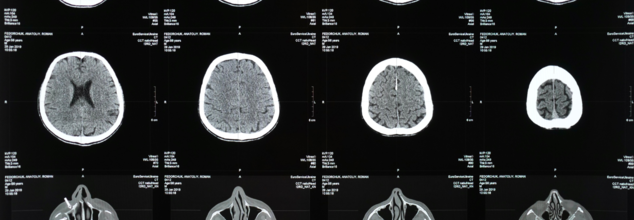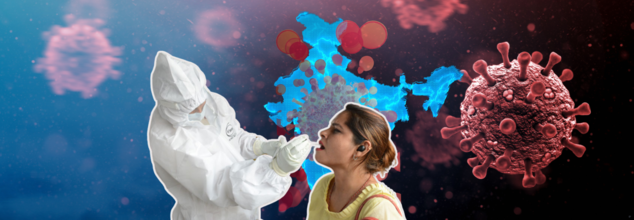- Health Conditions A-Z
- Health & Wellness
- Nutrition
- Fitness
- Health News
- Ayurveda
- Videos
- Medicine A-Z
- Parenting
- Web Stories
World Brain Tumor Day 2025: Theme, History, And Significance

Credits: Canva
Every year, on June 8, World Brain Tumor Day is observed, which highlights the urgent need for research, awareness, and support for those living with the disease. It is also a day that gives us the chance to spread awareness about it, including the symptoms and the causes.
World Brain Tumor Day 2025 Theme:
Every year, a theme is decided in order to focus on the goals, and this year the theme for World Brain Tumor Day is 'Empowering Lives Though Brain Tumor Awareness'. This focuses more on diagnosis, support, and early assessment of the tumor. This theme also brings back the attention to the need for conversation that must be done around this.
History of World Brain Tumor Day
Deutsche Hirntumorhilfe e.V. (German Brain tumor Association) internationally established World Brain tumor Day on June 8, 2000, to honour and support brain tumor patients and their families globally. The association chose this date because on June 8, 1952, Professor Martin Lewis of University College London diagnosed the first recorded brain tumor case.
World Brain Tumor Day Significance:
Along with raising awareness, the day also aims to inform the community about its symptoms, diagnoses and treatment options. It also assists the brain patients and their families, fosters research and progress in brain tumor treatment methods. The day also aims to champion improved healthcare access and support for individuals impacted by brain tumors.
It also motivates early detection and intervention to enhance patient outcomes.
What Is Brain Tumor?
Before diving into the concept of a brain tumor, it is important to first understand what a tumor is. A tumor refers to an abnormal lump or mass that forms due to the uncontrolled growth of cells in the body.
tumors are broadly classified into two main categories:
- Benign
- Malignant
A benign tumor consists of normal cells that have grown excessively to form a lump. This overgrowth may result from something going wrong in the body, but the cells themselves are not cancerous. On the other hand, a malignant tumor is made up of abnormal cells that grow uncontrollably. These are cancerous cells, and their aggressive nature can lead to serious health issues.
A brain tumor is a condition in which abnormal cells develop within any part of the brain. Similar to tumors elsewhere in the body, brain tumors can also be benign (non-cancerous) or malignant (cancerous). The presence of a tumor in the brain can interfere with normal brain function, depending on its size, type, and location.
Our bodies possess a natural healing mechanism that is crucial for survival. This repair system is activated whenever there is damage from injury, radiation from the sun, or harmful chemicals in the environment. However, this process can occasionally go wrong. When it does, small clusters of cancerous cells may begin to form. In most cases, the immune system successfully detects and destroys these abnormal cells before they grow. But in rare instances, these cancerous cells evade immune detection and continue to grow, leading to the formation of tumors or cancers.
Such abnormal growths can occur anywhere in the body. When these growths are located in the brain or spinal cord, they are referred to as Central Nervous System (CNS) tumors.
Causes of Brain Cancer:
The exact cause of brain tumors remains unknown. However, several theories and contributing factors have been proposed. Many medical experts believe that prolonged exposure to radiation, such as frequent x-rays or radiation therapy, may increase the risk of developing a brain tumor. Additionally, there is a growing concern about the potential link between long-term use of electronic gadgets—like mobile phones—and an increased risk of various types of cancers, including brain tumors. However, no conclusive scientific evidence has confirmed this link so far.
Research in this area is still ongoing, and scientists continue to investigate the causes and risk factors associated with brain cancer to gain a better understanding and develop more effective treatments.
Salmonella Outbreak Triggers Massive Egg Recall Across 7 States

Credits: Canva
A salmonella outbreak linked to a large egg recall has sickened dozens of people across seven U.S. states in the West and Midwest, federal health officials confirmed on Saturday.
Egg Recall Affects Over a Million Eggs
The August Egg Company has recalled approximately 1.7 million brown organic and brown cage-free eggs distributed to grocery stores between February and May. The recall was issued due to potential salmonella contamination, as stated in an announcement posted on the Food and Drug Administration’s (FDA) website on Friday.
States Impacted and Reported Cases
According to the U.S. Centers for Disease Control and Prevention (CDC), at least 79 people across seven states have been infected with a strain of salmonella traced back to the recalled eggs. Of these, 21 individuals have been hospitalized. The recall affects the following states: Arizona, California, Illinois, Indiana, Nebraska, New Mexico, Nevada, Washington, and Wyoming.
Consumers are advised to check the FDA and CDC websites for a full list of affected brands, plant codes, and Julian dates to identify whether the eggs they have purchased are part of the recall.
Recognizing Salmonella Symptoms
Salmonella infection can cause a range of symptoms, including diarrhea, fever, stomach cramps, severe vomiting, and dehydration. While most healthy individuals recover within a week without medical intervention, the illness can become more serious in certain groups.
High-Risk Groups Urged to Take Precaution
Young children, older adults, and individuals with weakened immune systems are at a higher risk of severe illness and may require hospitalization. Health officials urge anyone experiencing symptoms after consuming eggs to seek medical attention promptly.
Ongoing investigations are being conducted to determine the full scope of the outbreak and ensure contaminated products are removed from shelves.
Previous Outbreaks
The Health and Me has previously also reported on various Salmonella outbreaks happening in the US, including the outbreak caused by tomatoes, which has led to the US Food and Drug Administration (FDA) issue a Class I recall, also considered the highest warning label.
Class I recall means that there is a reasonable change that using the product could lead to "serious adverse health consequences or death".
Another outbreak was linked to Florida-grown cucumbers about which the CDC has also warned the population.
Very similar to what is happening now, another Salmonella outbreak was linked with backyard poultry and products like eggs, noted the CDC.
What Is Salmonella?
As per the US Food and Drugs Administration (FDA), Salmonella are a group of bacteria that can cause gastrointestinal illness and fever called salmonellosis. It can be spread by food handlers who do not wash their hands and/or the surfaces and tools they use between food preparation steps. It can also happen when people consume uncooked and raw food. Salmonella can also spread from animal to people.
FDA notes that people who have direct contact with certain animals, including poultry and reptiles can spread the bacteria from the animal to food if hand washing hygiene is not practiced.
Pets too could spread the bacteria within the home environment if they eat food contaminated with Salmonella.
Efficient mRNA May Reverse And Rid The Body Of HIV- New ‘Medical Miracle’ Treatment Sparks Global Buzz

Credits: Health and me
In a breakthrough widely hailed as a potential game-changer in the battle against HIV, scientists at Australia's Peter Doherty Institute for Infection and Immunity have made a discovery for a new method to expose the virus that lurks inside human cells. The innovative mRNA-based technology has the potential to lead the way to the long-desired cure for HIV—a condition that has infected millions worldwide and remains uncurable in spite of years of advances in medicine.
One of the biggest challenges to curing HIV is the virus's capacity to "hide" within some white blood cells. These viral reservoirs, which remain hidden, enable HIV to escape immune and antiretroviral detection. Despite medication possibly bringing the virus down to undetectable levels in the blood, latent HIV may persist within these cells and re-emerge, making patients a constant risk and requiring a lifetime of treatment.
Conventional therapies are able to suppress HIV replication but not eradicate these reservoirs. A cure has therefore been elusive—until now.
The mRNA Breakthrough
Building on the promise of mRNA technology, which made headlines worldwide during the COVID-19 pandemic, researchers at the Doherty Institute developed a targeted delivery system based on lipid nanoparticles (LNPs) to deliver mRNA directly to HIV-infected white blood cells.
Injecting mRNA into these cells was previously impossible since these white blood cells do not easily take up the lipid nanoparticles commonly employed for mRNA delivery. The researchers overcame this obstacle by designing a new lipid nanoparticle—designed as LNP X—and these enigmatic cells readily take it up.
Once inside the cell, the mRNA tells the cells to make signals that effectively "unmask" the virus, rendering the concealed HIV detectable by the immune system and medicines.
Dr. Paula Cevaal, a research fellow at the Doherty Institute and co-first author of the landmark study published in Nature Communications, described the team’s reaction to their initial findings as one of disbelief and excitement. “We were overwhelmed by how much of a night and day difference it was—from not working before, and then all of a sudden it was working. All of us were just sitting gasping like, ‘wow’,” she told The Guardian.
The findings have been reproduced repeatedly in the laboratory with blood cells from HIV-infected donors. Although the research is still at the cellular level, the discovery represents an unprecedented breakthrough in HIV research.
How mRNA Technology Works For HIV?
mRNA technology works by providing genetic instructions to cells, which in turn trigger them to make specific proteins. This was successfully employed in COVID-19 vaccines, allowing cells to produce viral proteins that educate the immune system.
In this HIV study, the mRNA causes infected white blood cells to display markers that indicate the presence of the virus. Basically, it "awakens" latent HIV in the cells so that current immune defenses and antiretroviral drugs can detect and eliminate the infection.
This strategy tackles one of the fundamental problems of HIV treatment—the elusiveness of the virus in reservoirs—and may signal a shift in treatment strategies.
Why is There A Global HIV Burden and the Urgency for a Cure?
Globally, there are almost 40 million individuals infected with HIV, out of which about 1.2 million reside in the United States alone. The current therapy includes daily antiretroviral therapy (ART) to suppress the virus, avoiding evolution into AIDS and transmission. ART is not a cure and is lifelong, though.
For all the strides that have been made in treatment and prevention, HIV still kills an estimated one person per minute worldwide, UNAIDS data as of 2023 indicate. It also continues to cause new infections, which intensify the need for a final cure.
Additionally, HIV disproportionately impacts vulnerable populations. In the United States, gay and bisexual men contribute to approximately 67% of new infections, a reflection of ongoing disparities and the need for creative solutions.
Though the breakthrough is groundbreaking, it is important to emphasize that this study is in its early stages. The experiments to date have been carried out in the laboratory, in cells from patients but not within the human body.
Before patients can benefit from this potential therapy, the treatment will need to pass through extensive tests in animal models to determine safety and efficacy, followed by strictly controlled human clinical trials. These procedures take years.
Dr. Cevaal warns against premature hope, recognizing that numerous biomedical improvements fail to reach clinical use. But she is optimistic: "In HIV cure, we have never seen anything as good as the way we're doing now, in terms of how well we can uncover this virus."
The new lipid nanoparticle delivery system could be used for conditions such as HIV treatment, but beyond it. According to Dr. Michael Roche, co-senior author of the research from the University of Melbourne, the targeted white blood cells are found in other conditions, such as cancers. This presents potential for mRNA treatments to revolutionize therapy for a range of conditions.
This finding not only demonstrates the strength of advanced biomedical research but also restores hope that an HIV cure, previously considered impossible, is within reach.
COVID-19 Cases In India Surges Past 5,000 With More Than 50% Affecting Adults Aged Between 25-50, State Officials Report

Credits: Health and me
India is witnessing a concerning surge in COVID-19 cases with active cases jumping over 5,364 as of June 7, as per the COVID dashboard, Ministry of Health and Family Welfare. The figure marks a sharp increase from only 257 active cases on May 22. More importantly, more than 50% of the new infections are in the 25-to-50-year age group the working population which has caused alarm among public health officials.
The number of new COVID-19 infections reported on a daily basis continues to slowly rise. On June 6, 564 cases were added in India, increasing the active caseload to 5,364. The number has now crossed 5,364, indicating an upward trend. Along with the increasing infections, at least seven fatalities were recorded within a 24-hour period, with the departed including those from West Bengal (4), Maharashtra (3), Delhi (2), Kerela (2) and Karnataka (3). All six of the seven deaths were older patients with comorbidities like diabetes, hypertension, or pneumonia. The youngest death was in a five-month-old male infant with pre-existing respiratory problems.
These new cases are caused, according to experts, by newly emerging subvariants such as LF.7, XFG, JN.1, and more recently identified NB.1.8.1. These variants are said to be more transmissible and have partial immune escape characteristics but, as of yet, have not shown increased disease severity.
Experts are seeing a trend towards mild to moderate symptoms, but the rate of infection is worrying as it is impacting the productive segment of the population and may stretch the healthcare machinery if not contained.
Kerala, Delhi, and Maharashtra Among Worst-Hit States
Kerala is still the hotbed of this new wave, with more than 1,487 active cases according to the latest report. Delhi (562), West Bengal (538), Maharashtra (526), and Gujarat (508) take second place. The Gujarat state has registered a high count of infections in the age group of 25-50 years, which has contributed to more than 50% of its 700+ total cases.
Surprisingly, officials also noted that around 10% of new cases in Gujarat were infants under the age of one. The elderly population, which bore the brunt of earlier waves, has seen relatively fewer infections in the current resurgence. This shift in demographic impact is being closely monitored by epidemiologists.
New COVID Symptoms To Note
In contrast to the previous waves where dramatic cases of anosmia (loss of smell) and ageusia (loss of taste) were observed, present patients are reporting a different constellation of symptoms. The most frequently reported symptoms are high-grade fever, intense muscle aches (myalgia), and gastrointestinal symptoms such as diarrhea.
This wave clinically is presenting differently. Patients, particularly those in younger age groups, are presenting with intense body pains and fever instead of respiratory complaints.
Hospitalization Rates and Deaths
Whilst the figure of cases is rising, hospitalization rates continue to be fairly low — ranging at about 5%. Nevertheless, the seven recent deaths serve as a stark reminder of the risk posed to vulnerable groups. Ministry data show all victims had comorbidities such as seizures, respiratory failure, kidney disease, and cancer.
Three of the recent Gujarat fatalities included young women aged 18, 20, and 47, all from Ahmedabad. "This is not common and highlights the need to not ignore any symptoms," said a senior health official.
The Indian government has sent advisories to every state and union territory in order to be prepared. This involves keeping proper stocks of oxygen, antiviral drugs, and ICU beds. States have also been instructed to distinguish between COVID-19 and other viral fevers, which have common symptoms.
A ministry senior official observed, "We are calling for all states to be on their toes and to intensify surveillance, particularly in urban areas and public transport hubs."
Hospitals and clinics in major metros are keeping a lookout, with training and testing protocols of the staff being revised to account for the evolving clinical presentation of the disease.
Vigilance Needed Even With Vaccination Efforts
India has come a long way in COVID-19 vaccination with more than 2.2 billion doses given so far, but the new variants have again pushed to the forefront the question of booster doses, particularly among frontline workers and the elderly.
Vaccination is not a static shield. As the virus mutates, so should our immunity. It's important to remain current with booster doses if they are suggested.
Although hospitalization and serious cases are still low, the recent spurt in COVID-19 cases in India is a stark reminder of how unpredictable the virus has been. With variants spreading and attacking younger people, a joint effort through vigilance, prompt testing, booster vaccinations, and responsible public action is a must.
For the time being, health authorities keep a close watch on trends, advising people not to ignore mild symptoms and to follow basic precautions such as hand hygiene, wearing a mask in crowded places, and seeking a test when symptomatic.
© 2024 Bennett, Coleman & Company Limited

